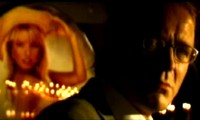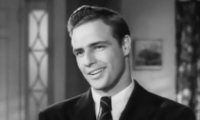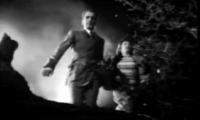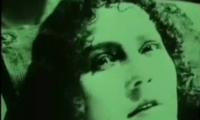I found this while browsing YouTube for clips of the Stones playing songs from their great, underrated “Between the Buttons” album, the first Stones record I can remember getting high to.
Stones, “Tribute To Brian Jones” (Dylan cover from the 1995 album “Stripped“)
So out of touch was I with the band’s recent history that I didn’t even realize they’d done a cover of the Dylan song that people unfamiliar with Muddy Waters think they were named for. It’s a good cover (and it’s been removed from the above video by YouTube for “copyright reasons” and replaced with a version by Maxine Weldon), though maybe not as good as the one Jimi Hendrix played at Monterey, the one that replaces the original’s piping circus organ with majestic thunderheads of guitar and its sneer with a pitying shake of the head. But this video, made by or for someone named Lulita B Jones, gets an extra layer of depth from its astonishing photos — which are by turns sexy, poignant, funny, and chilling — of Brian Jones.
I always thought Dylan wrote the song for Edie Sedgwick, but the video turns it into a song about Jones, a document of his slow, dazed fall off the chrome horse. You see him as he was in the band’s first years with his shining (and somewhat geeky) dome of blonde hair, looking like Mick’s delicate twin. He was supposed to be the pretty one, the Paul to Mick’s John and Keith’s George, an angel with the smirk of a devil or of a schoolboy pretending to be one.
Over the years the hair grows out and gets dirty, the narrow-lapeled suits give way to kurtas and shawls. He doesn’t just smirk at the camera, he scowls and picks his nose at it. (Someone ought to release a coffee table book of photos of beautiful stars making ugly faces.) His features coarsen, and in more and more of the stills he looks too stoned to play an instrument. He’s supposed to have spent most of the Beggar’s Banquet sessions parked in a corner, numbly shaking a tambourine or picking abstractedly at an autoharp or sitar whose plinks were left out of the mix. A while later he was kicked out of the band, and on July 3, 1969, he drowned in a swimming pool. He was 27.
By now the video mori is a familiar genre. The prototype is the memorial montage that’s shown at each year’s Oscars, two and a half minutes of iconic shots of Hollywood legends dissolving into less iconic shots of Hollywood asterisks, which I guess is a metaphor for what awaits most legends. In those years I actually watch the ceremonies, the tributes always make me tear up. But when I see one years after the fact, like the 2003 memorial below, I feel no more than mild bemusement.
Oscars, “Video Mori” (2003)
Who knew that George Roy Hill, the director of “Butch Cassidy and the Sundance Kid,” died in the same year as Conrad Hall, its cinematographer? Who knew Billy Wilder was still alive in 2003? Shit, he must have been a hundred. And who was Sheb Wooley?
The problem is it’s hard to mourn a collectivity. A million and one dead people is a tragedy, Stalin said. But a million is a statistic. Most of the group tributes I’ve browsed on YouTube don’t do anything to me.
Not the ones to dead rappers. Not the ones to dead porn stars.
Not the round-ups of dead wrestlers.
PadgePower, “Tribute To Dead Wrestlers” (2007)
R.I.P. “Big Boss Man” Swanson! God speed, Bryan “Crush” Adams!
To be affecting, a tribute video has to be devoted to a single subject. Even with the distracting shoe-gazing song that accompanies it, a memorial to Marlon Brando testifies to the sheer volume of human force that was sucked out of the universe when he died, in seeming defiance of the law of the conservation of energy.
mightyles, “Marlon Brando Tribute” (2007)
It brings to mind what Frank O’Hara, who is himself dead now, wrote about other dead:
Is the earth as full, as life was full, of them?
When I watch these memorials, I sometimes wonder how much of their power derives from the viewer’s knowledge that their subjects have passed out of existence. Those dancers will never dance again. Those beautiful creatures are only dust. I wonder whether that would be apparent even to someone who knew nothing about Marlon Brando or Brian Jones or Nico or Edie Sedgwick, who didn’t recognize certain styles of hair and clothing, even certain kinds of film stock, as signifiers of the past.
Roland Barthes writes of the power old photographs have to part the veil of time and pierce the contemporary viewer, who through them briefly seems to make contact with the dead. Looking at them, you meet the gaze of the dead and know that the dead are meeting yours. Barthes calls this quality punctum.
There isn’t a trace of punctum in P-Diddy’s (then Puff Daddy’s) famous tribute to Biggie Smalls, “I’ll Be Missing You.”
Puff Daddy/Faith Evans/112, “I’ll Be Missing You” (1997)
That’s probably because there isn’t a trace of Biggy in it. It’s all about Puffy. Puffy on a motorcyle. Puffy falling off a motorcyle. Puffy by candlelight. A black-clad Puffy (is the suit Prada or Sean John?) escorting white-clad children through a meadow. It’s a tribute made by somebody so narcissistic that he can’t expend an iota of grief on the dead. Forget about the dead you loved, Dylan said, and apparently P-Diddy took him at his word.
The self is also the object of mourning in the video of Johnny Cash’s cover of the Trent Reznor song “Hurt.” But every moment of it is wounding.
Johnny Cash, “Hurt” (2002)
The mourner isn’t a sleek young man with his own line of clothing. He’s old and he’s dying, the dying king of an empire of dirt. His face is the coin of that empire, it’s graven with suffering. But you also see what he’s mourning, the radiant — but by no means beautiful — young Johnny Cash, a figure as dark as the highwaymen in the ballads hill people sang before they invented Country, his skin pocked, his narrow black eyes full of humor and menace.
You see the young wife who wrote the song he became famous for, though it was all about what she felt for him, that terrible, damning love like a ring of fire. She’s gone now, and so is the young man she fell in love with, and all that’s left is the old man who inconsolably grieves for them and for himself.
Count no man happy, however fortunate, until he dies.
– Peter Trachtenberg







